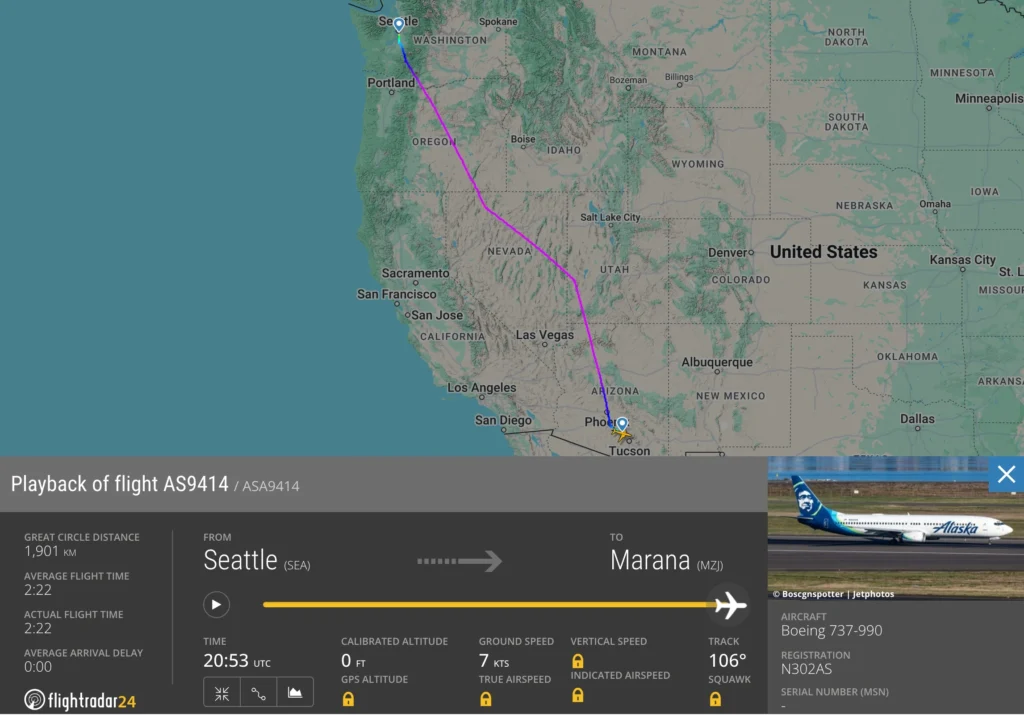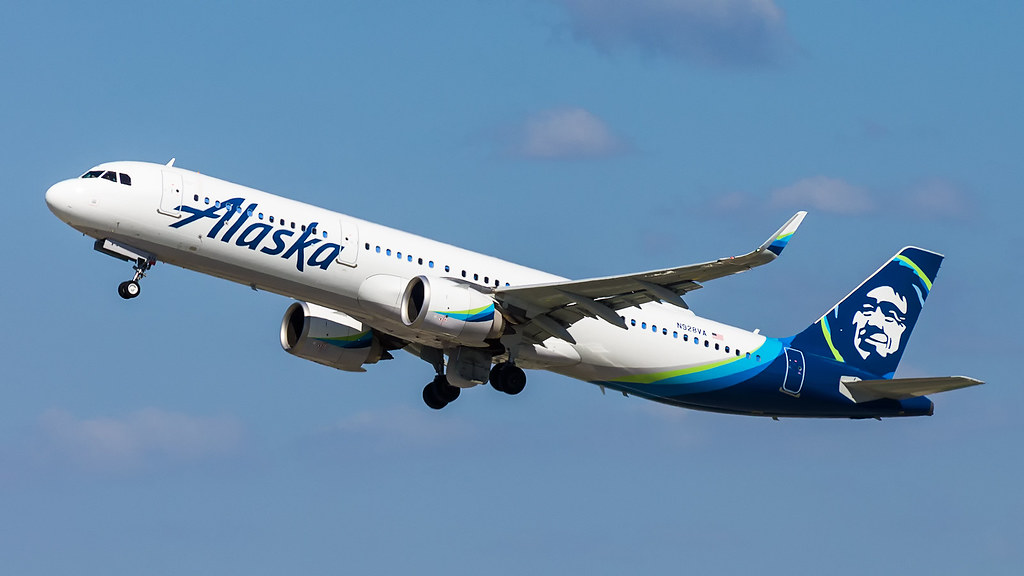
SEATTLE- Alaska Airlines (AS) has officially retired the world’s first Boeing 737-900 aircraft, ferrying the historic airframe to Pinal Airpark (MZJ) in Arizona on Tuesday, April 8, 2025.
The retirement comes just shy of the aircraft’s 22nd anniversary with Alaska Airlines, concluding nearly a quarter-century of service since its first flight as Boeing’s test aircraft under registration N737X, Simple Flying reported.
 Photo: By Alan Wilson from Stilton, Peterborough, Cambs, UK – Boeing 737-900s ‘N302AS’ and ‘N462AS’ Alaska, CC BY-SA 2.0, https://commons.wikimedia.org/w/index.php?curid=50775887
Photo: By Alan Wilson from Stilton, Peterborough, Cambs, UK – Boeing 737-900s ‘N302AS’ and ‘N462AS’ Alaska, CC BY-SA 2.0, https://commons.wikimedia.org/w/index.php?curid=50775887Alaska Airlines Retires First 737-900
The retirement of N302AS marks the end of an era for both Alaska Airlines and Boeing’s 737 program. This particular airframe holds special significance as the prototype for Boeing’s 737-900 series, originally developed as a competitor to the Airbus A321.
Before delivery to Alaska Airlines, the aircraft served as Boeing’s testbed, conducting crucial flight tests that accumulated 381 hours toward FAA certification.
N302AS maintained several distinctive features throughout its service life that set it apart from the rest of Alaska’s fleet.
Unlike most of its counterparts which received blended winglet upgrades, this aircraft retained its original straight-wing design. It also preserved the now-obsolete “eyebrow” windows above the cockpit, a feature eliminated on newer aircraft due to advancements in avionics technology.
 Photo: FlightRadar24
Photo: FlightRadar24Final Journey Details
The historic aircraft departed Seattle-Tacoma International Airport (SEA) as flight AS9414 at approximately 11:30 local time.
Following takeoff from Runway 16L, the plane climbed to its maximum service ceiling of 41,000 feet—significantly higher than its typical passenger-carrying cruising altitude of 34,000-37,000 feet.
After passing over Phoenix, the aircraft began its final descent at 13:39, touching down on Runway 12 at Pinal Airpark (MZJ) at 13:53.
The day before its retirement flight, N302AS completed its final revenue service with four legs, visiting San Francisco International Airport (SFO), Austin-Bergstrom International Airport (AUS), Hollywood Burbank Airport (BUR), and returning to Seattle-Tacoma International Airport (SEA).
After completing its testing duties, the aircraft was delivered to Alaska Airlines on April 29, 2003, as the eighth 737-900 in the carrier’s fleet. Throughout its service life with Alaska, N302AS accumulated 67,909 flight hours across 27,560 flight cycles.
The retirement leaves just four 737-900 airframes remaining in Alaska’s fleet, all scheduled for withdrawal from service by the end of 2025. This retirement aligned precisely with the carrier’s fleet planning, as the minimum retirement date for this aircraft was set for April 2025.
 Photo: Colin Brown | Flickr
Photo: Colin Brown | FlickrCompetitor to A321
The 737-900 program began in June 1997 as Boeing’s attempt to compete with the Airbus A321. Engineers extended the fuselage by seven feet, ten inches beyond the 737-800, creating an overall length of 138 feet, three inches. However, the aircraft’s emergency exit configuration limited passenger capacity to 189, identical to the shorter -800 variant.
This limitation contributed to disappointing sales figures, with only 52 airframes ordered. The underwhelming market response prompted Boeing to develop the more successful 737-900ER variant, which featured additional emergency exits and could accommodate up to 215 passengers with increased range capabilities.
As the series prototype, Boeing utilized N302AS (then registered as N737X) extensively during its development phase. The aircraft completed its maiden flight on August 3, 2000, debuting as the largest 737 Next Generation variant at that time.
The test program included collaboration with CFM International, the exclusive manufacturer of the aircraft’s CFM56-7 engines. During testing, engineers identified and addressed several issues, including a spoiler buffet effect during landing that Boeing characterized as “more of a nuisance” rather than a safety concern.
The prototype also played a crucial role in investigating vibration and fatigue issues with the auxiliary power unit (APU) inlet connection and helped identify sources of excessive flight deck noise, leading to modifications that improved the aircraft’s operational characteristics.
Stay tuned with us. Further, follow us on social media for the latest updates.
Join us on Telegram Group for the Latest Aviation Updates. Subsequently, follow us on Google News
Alaska Airlines Last Airbus A321neo Flight from Seattle to Los Angeles
The post Alaska Airlines Retires First Ever Boeing 737-900 in the World appeared first on Aviation A2Z.















